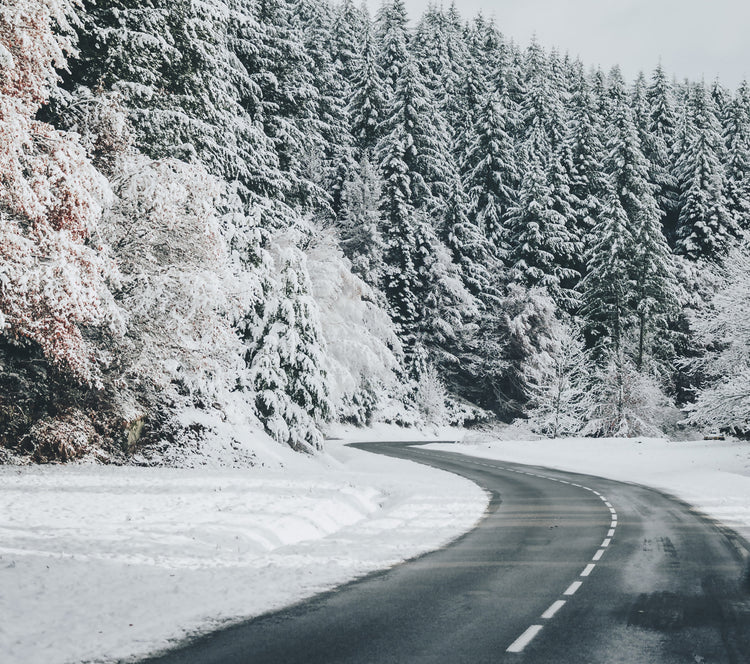Our body wants to maintain a constant temperature (homoeotherm). Vital organs, such as our hearts and stomachs, need this to function properly. Our skin has sensitive cold receptors that can detect a sharp drop in skin temperature and pass on this information to the brain. They emit more pulses when cooling down than when warming up and they are also more numerous than heat receptors. Cold receptors are also known as Krause's corpuscles. They can detect cold because they react to tissue shrinkage caused by a drop in temperature. When it’s cold, the blood vessels in the skin contract and blood flow to the surface of our bodies drops. Heat has the opposite effect, as everything opens up to release the excess body heat.
DOES COLD HAVE THE SAME EFFECT ON THE MUSCLES?
Whenever we are engaged in intense physical activity, the blood _ows quicker through our body and warms up our muscles. If circulation drops, our muscles will cool down automatically. But to be able to start exercising, the muscles must already be warmed up. This implies a sort of contradiction.
WHAT PROPERTIES ARE ESSENTIAL TO AN ANTI-COLD PRODUCT?
These products must be oil-based and definitely non-occlusive. They must certainly not contain water because you always lose 25% more warmth in water. You can think of it as follows. Imagine that you are sitting outside, in a pavement café. It's 25 degrees and you are only wearing a T-shirt. Well, that's no problem whatsoever. But try taking a 25 degree bath and you won't stay in it for long! This is why swimmers need extra protection, as they lose much more body heat than other sportspersons. They need good protection against the cold, or their performance will suffer badly.
DOES YOUR SKIN NEED DIFFERENT PROTECTION AT DIFFERENT AGES?
In principle, everyone needs the same protection. But the older you are, the slower your skin adapts to the ambient temperature. This does not mean that older skin requires di_erent or fewer protection products. On the contrary, it actually requires a little bit extra protection. What you see happening is that people use warming products when it is cold, but you should avoid doing this with children. It is also true that cold hnds and feet are often age and gender related.
ARE SOME PARTS OF THE BODY MORE VULNERABLE TO COLD THAN OTHERS?
Our extremities – the parts of our bodies that stick out from the rest – cool down the quickest. Everyone has cold hands or feet sometimes. There is the least circulation in these parts of the body and they are the quickest to take on the ambient temperature. It is extremely important to protect the face. Most people wear the right clothes, but their face is often left exposed. What's more, approximately 40% of the body's temperature is lost via the head and neck.
ARE THERE THINGS THAT SPORTSPERSONS AND THEIR TRAINERS SHOULD PAY EXTRA ATTENTION TO IN ORDER TO BE BETTER PREPARED FOR THE COLD?
One very common mistake is to use warming products without a protective film. The product will open the blood vessels to improve blood circulation. But if you do not apply protection it will have the opposite effect and you will be colder outdoors that if you had not used any product in the first place. Using a warming product this way will work against the body's own natural mechanism. Choose a warming product that reduces heat dissipation without causing an occlusive effect. Apply the product – for example to your hands, legs and feet – preferably while these parts of the body are still warm. This will keep your temperature more constant, as once you are cold, the damage has already been done. Training schedules often contain blocks of training in the cold in order to adapt to low temperatures. However, a recent study which tested immersing hands in cold water, showed that no such adaptation takes place. However, it is necessary to note here that this test involved cold water (and we know the effects of water), so it would be a good idea to conduct this test in cold air. We should also remember that the study involved a person immersing their hands in cold water, without exerting themselves physically. Engaging in intensive exercise at low temperatures is a diferent situation altogether, as this stimulates the circulation.
WARMING UP: EMPIRICAL RESEARCH
For certain complaints or treatments, therapists and sports people need extra warming up.NAQI® has developed speci_c warming products for this purpose. The lack of scienti_c research into the e_ectiveness of warming products has been the subject of many discussions. The most important counter-arguments are that warming lotions may cause vasodilatation, which takes blood away from the muscles, and that their active ingredients do not penetrate through to the muscle. NAQI® warming products merit important consideration in treatments and contribute to the quality of the care provided as we will illustrate here.
EMPIRICAL RESEARCH
PROTOCOL
Sixteen male volunteers were treated with a neutral massage lotion (LO* = NAQI® Massage Lotion Sport) and a Warming Massage Lotion (MP = NAQI® Massage Lotion Ultra Plus) on their thighs. Four massage techniques were applied: efleurage (EF), petrissage (PE), tapotement movements (HA), and to rub (IN). The temperature of the skin and of the muscle tissue at a depth of 1.5 cm were measured before the massage, immediately after the massage, and _ve minutes after the massage. * Lotion is an oil in water-based product that provides no cold protection.
DATA
- SKIN TEMPERATURE
Tables 1 and 2 show the evolution of the skin temperature. We see that a massage with a neutral lotion (LO) leads to a drop in skin temperature. This drop is only corrected through the tapotement massage. When using a warming lotion (MP), there is an immediate increase in temperature, which increases even further after _ve minutes. Rubbing in using a warming hydrogel (WU = oil-free lotion) or warming lotion (MP) _rst results in a slight drop,followed by an increase in temperature _ve minutes later.

- TISSUE TEMPERATURE
Tables 3 and 4 illustrate the evolution of the temperature of the muscle tissue. Massage with a neutral lotion creates a drop in temperature in the muscle tissue. When using a warming lotion, the temperature remains constant when applying e_eurage; it rises with petrissage and drops slightly with tapotement. Rubbing in a warming hydrogel or massage lotion leads to a drop in temperature.
CONCLUSION
Applying or just rubbing in warming products only creates an increase in blood circulation to the skin. It is only when used in combination with specific massage techniques that warming products have a significant effect. Massage creates a drop in temperature (ten minutes after massaging, the blood that has been massaged away has not yet been replaced) that is compensated for by the effect of the warming product. In order to obtain an active hyperaemia in the muscles five minutes after a massage, a vasodilatation product is needed, combined with an intense massage (petrissage).
OPERATION MECHANISM: SHUNT
The receptors are awakened when applying a warming product. Neuropeptides that are responsible for vasodilatation are separated out.
The network of blood vessels in the skin is more extensive than is needed for nourishing this organ, partially because the thermo- regulation is controlled by the skin. At room temperature, blood flows just to 50 to 70% of the capillaries. Under the influence of heat and cold, skin temperature changes and the thermo receptors are awakened sending a signal to the central nervous system. The blood vessels in the skin awakened, thus the muscles react to this: vasodilatation with heat, vasoconstriction with cold.
A speedy regulation of the blood supply can be achieved through arterio-vascular anastomoses (natural connection between blood vessels), also called shunts. When influenced by hot and cold, shunts can cause extreme differences in blood supply: an increase from 0.3 ml/min to 150 ml/min blood per 100 mg of tissue. These differences have an influence on the underlying of muscle tissue.
The local application of a heating product has the same physiological effect as external heat, as is described above. Hence the great importance of protecting the skin with a lipogel (product made exclusively from oil, such as NAQI® Warming Up Competition) when in a cold environment, in order to avoid loss of body heat. This switches off the natural protection.
MUSCLE WARM - UP
Cold muscles in a relaxed state should not be suddenly put into motion. This could cause them to tear. A warm up is necessary before any sports/exercisesin order to increase the temperature of the muscles. A passive warm up can increase the temperature in the same way as an active warm up – but without drawing on any energy reserves. Passive warm ups are also important as a complement to the increase in temperature from active warm ups or in order to maintain the temperature.
When skin is moist or wet, it loses 25% more heat. Therefore, when it rains, an oil should be applied in order to reduce the loss of heat. This is even more important in cold weather conditions. The body reacts to the cold by narrowing the blood vessels so that it can maintain the body temperature. A cold environment can reduce blood circulation to a third of its normal volume. This occurs not just at skin level, but also in the underlying muscles, with the result that the blood supply is reduced and the body temperature drops.
Bodies lose more warmth at a temperature of 10°C and a wind speed of 40 km/h than at -5°C with no wind. These factors hamper performance and increase the risk of injury. Heat loss is reduced by using a water-free and water-resistant product. A lipogel, for example, provides speci_c long-lasting protection against cold, wind, and rain.
Applying a product that stimulates blood circulation and also protects against the cold lengthens the effect of the active warm up and doubles the duration of the protection. This promotes the capacity to function as well as coordination. The NAQI® Warming Up Competition range was designed specifically with this in mind. The film left on the skin by this product does not hamper the skin’s normal functions and is particularly suitable for outdoor sports or to maintain vasodilatation achieved after a massage.

RESEARCH
Scientific research has revealed that there is a significant effect when applying a warm-up lipogel at 12°C. Fifteen people were treated with NAQI® Warming Up Competition 2; after 15 minutes, their skin temperature and water release were measured against a site on the body that had not been treated with the product. The volunteers had to cycle outside for 30 minutes and 15 minutes after coming back in; the measurements were then taken again.

RESULTS
The following figures clearly illustrate that the application of the lipogel results in a significant drop in water release. After cycling, we noticed a significant increase in water release among the sample group, which goes hand in hand with an increase in heat loss. The lipogel maintains the significant reduction of heat loss after cycling. NAQI® Warming Up Competition 2 (WUC 2) increases the temperature of the skin. After cycling, the temperature drops overall. The lipogel really maintains the temperature higher than the sample site, and therefore guarantees less heat loss.
WHY USE WARMING PRODUCTS IN COLD WEATHER
The table below illustrates the importance of the use of warm-up products for certain treatments and the necessity of lipogels, such as NAQI® Warming Up Competition before exercising in cold weather.


